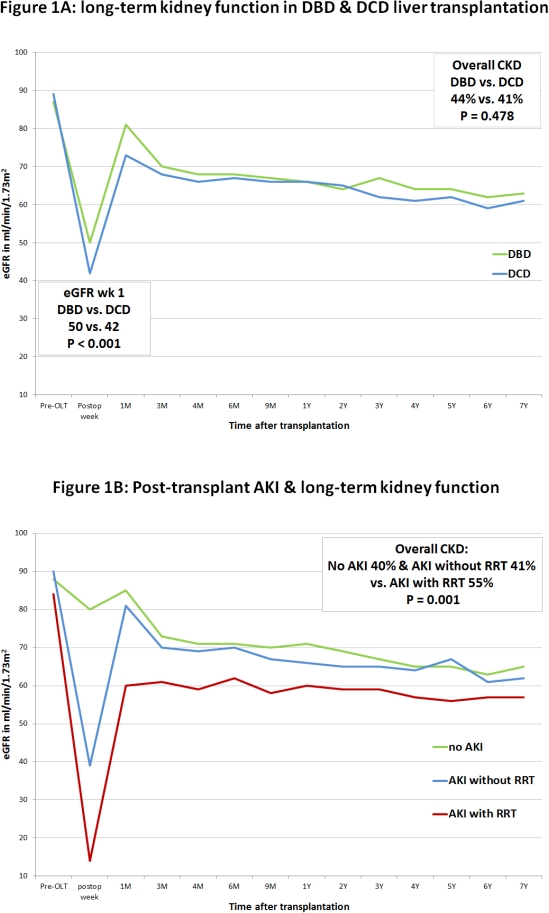Factors Associated with the Development of Chronic Kidney Disease after Liver Transplantation
Liver Unit, Queen Elizabeth Hospital, Birmingham, United Kingdom.
Meeting: 2018 American Transplant Congress
Abstract number: 150
Keywords: Donors, Liver, non-heart-beating, Outcome, Renal failure
Session Information
Session Name: Concurrent Session: Liver - Kidney Issues in Liver Transplantation
Session Type: Concurrent Session
Date: Sunday, June 3, 2018
Session Time: 4:30pm-6:00pm
 Presentation Time: 5:30pm-5:42pm
Presentation Time: 5:30pm-5:42pm
Location: Room 6B
Background
Renal dysfunction is a common complication after liver transplantation. The increased use of DCD livers has been associated with postoperative acute kidney injury (AKI). However, the relation between DCD grafts and development of chronic kidney disease (CKD) is less well defined. Our aim was therefore to assess risk factors, including graft type and AKI, with impact on development of CKD after liver transplantation.
Methods
We included all patients, who underwent primary liver-only transplantation between 2007-2015 for end-stage liver disease. Patients with a survival of less than 3 month after transplantation were excluded. eGFR was calculated using the MDRD-4 formula and renal function was divided into 3 groups: no CKD (eGFR ≥60), mild CKD (eGFR 30-59) and severe CKD (eGFR <30). Postoperative AKI was defined according to the KDIGO criteria.
Results
A total of 961 patients were included (72% DBD & 28% DCD grafts). During the study period, 43% of the patients developed CKD. Importantly, severe CKD and end-stage renal disease occurred in only 3% and 1%, respectively. DCD recipients had a more pronounced drop in kidney function in the first postoperative week, but they recovered quickly and long-term kidney function was comparable with those receiving a DBD graft (Figure 1). Only recipients requiring renal replacement therapy (RRT) in the immediate post-transplant period had significant impaired long-term kidney function (Figure 2). This was confirmed in a multivariable COX-regression analysis for development of CKD (AKI requiring RRT: HR 1.6, 95% CI 1.2-2.1, P=0.002).
Conclusion
Recipients with severe postoperative AKI requiring RRT are less likely to experience a full recovery in long-term kidney function. Interestingly, CKD did not occur more frequently after implantation of DCD grafts. Overall, it is essential to identify risk factors and treat recipients at risk for severe postoperative AKI to preserve long-term kidney function.
CITATION INFORMATION: Kalisvaart M., Schlegel A., Trivedi P., Roberts K., Mirza D., Perera T., Isaac J., Ferguson J., Muiesan P. Factors Associated with the Development of Chronic Kidney Disease after Liver Transplantation Am J Transplant. 2017;17 (suppl 3).
To cite this abstract in AMA style:
Kalisvaart M, Schlegel A, Trivedi P, Roberts K, Mirza D, Perera T, Isaac J, Ferguson J, Muiesan P. Factors Associated with the Development of Chronic Kidney Disease after Liver Transplantation [abstract]. https://atcmeetingabstracts.com/abstract/factors-associated-with-the-development-of-chronic-kidney-disease-after-liver-transplantation/. Accessed December 23, 2025.« Back to 2018 American Transplant Congress

